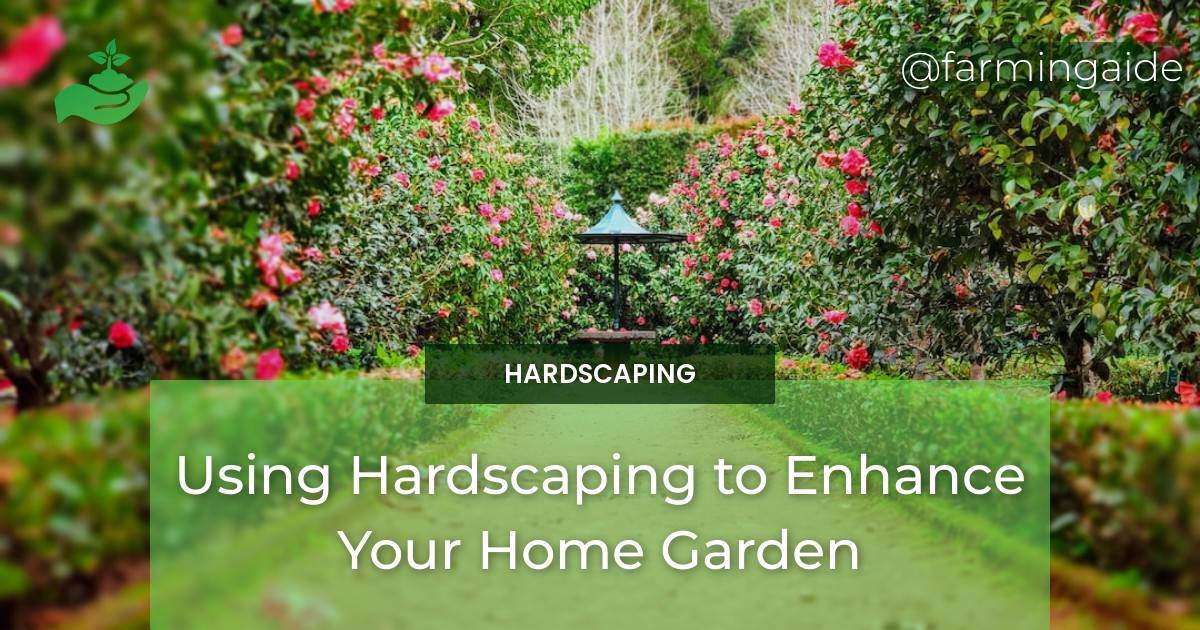Enhancing your home garden can be a rewarding and enjoyable experience, but it can also be a daunting task. With so many options and techniques available, it can be overwhelming to know where to start. However, one often overlooked aspect of home gardening is the use of hardscaping. This technique involves incorporating non-living elements into your garden design, such as pathways, walls, and structures. Not only can hardscaping enhance the aesthetic appeal of your garden, but it can also provide practical benefits such as reducing maintenance and care. In this article, we will explore the various ways in which hardscaping can be used to enhance your home garden, and how it can be a budget-friendly and sustainable option for any gardener.
Introduction to Hardscaping
Hardscaping is a term used to describe the use of non-living elements in garden design. This can include materials such as stone, wood, concrete, and metal. These elements are used to create pathways, walls, patios, and other structures that can add dimension and structure to your garden. Hardscaping is often used in conjunction with softscaping, which involves the use of living elements such as plants and trees. Together, these techniques can create a balanced and visually appealing garden design.Benefits of Hardscaping in Home Gardening
There are numerous benefits to incorporating hardscaping into your home garden design. Some of these include:- Reduced maintenance: Hardscaping can help reduce the amount of time and effort needed for garden maintenance. For example, using stone or gravel pathways can prevent weeds from growing and reduce the need for frequent mowing.
- Increased functionality: By adding structures such as patios or seating areas, hardscaping can make your garden more functional and enjoyable for activities such as outdoor dining or entertaining.
- Improved drainage: Hardscaping can help improve drainage in your garden, preventing water from pooling and causing damage to plants.
- Enhanced aesthetic appeal: Hardscaping can add texture, color, and visual interest to your garden, making it more visually appealing.
- Budget-friendly: Hardscaping can be a cost-effective option for home gardening, as it often requires less maintenance and care compared to traditional softscaping.
- Sustainable: By using materials such as recycled concrete or natural stone, hardscaping can be a sustainable option for home gardening.
Incorporating Hardscaping into Your Garden Design
When incorporating hardscaping into your garden design, it is important to consider the overall aesthetic and functionality of your space. Here are some tips to help you get started:1. Plan your layout
Before starting any hardscaping projects, it is important to have a clear plan in place. Consider the size and shape of your garden, as well as any existing structures or elements that you want to incorporate into your design. This will help you determine the best placement for hardscaping elements such as pathways, walls, and structures.ALSO READ
2. Choose the right materials
When selecting materials for your hardscaping, it is important to choose options that are durable and can withstand the elements. Natural stone, concrete, and wood are all popular choices for hardscaping, as they are long-lasting and can add a natural and organic feel to your garden.3. Create focal points
Hardscaping can be used to create focal points in your garden, drawing the eye to specific areas and adding visual interest. This can be achieved through the use of structures such as pergolas, arches, or water features.ALSO READ
4. Consider maintenance and care
While hardscaping can reduce maintenance and care in the long run, it is important to consider the upkeep of these elements. For example, stone or concrete pathways may need occasional cleaning or sealing to maintain their appearance.How Can Hardscaping Improve the Sustainability of a Home Garden?
Incorporating hardscaping into a garden can greatly enhance the sustainable home gardening with hardscaping. Utilizing materials like permeable pavers can reduce water runoff, while adding stone walls or concrete benches can create microclimates that support diverse plant life. These features contribute to a greener, more eco-friendly garden environment.
Conclusion
In conclusion, hardscaping is a valuable technique for enhancing your home garden. Not only can it add aesthetic appeal and functionality to your space, but it can also be a budget-friendly and sustainable option for any gardener. By incorporating hardscaping into your garden design, you can create a beautiful and low-maintenance outdoor space that you can enjoy for years to come. So why not give hardscaping a try and see the difference it can make in your home garden?RELATED ARTICLES:


